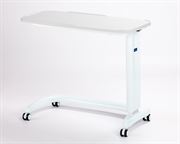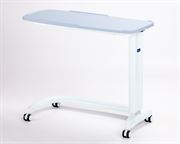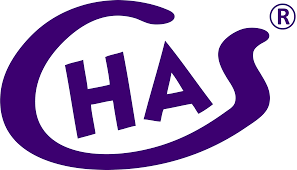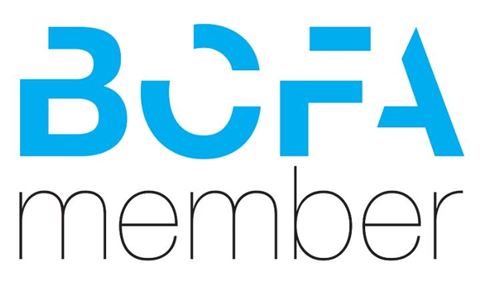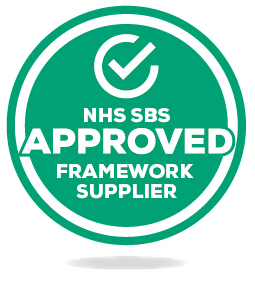Hackitt Report & Fire safety Act 2021 – What Could This Mean for Your Care Home?
After the Grenfell Fire Disaster in 2017 the Hackitt Report was set up and released to ensure such tragic events would not happen again. The main intention of the review was to layout improved building regulations – particularly in high rises & multi-occupancy buildings, and to provide assurances to homeowners that their property was safe.
The report put the responsibility on developers and building owners to properly communicate to residents all the safety measures and strategies of the occupied building. It also heaped pressure on the building sector to tidy up regulations and to properly define the responsibilities of key individuals in the building process.
Following the report, on April 29 2021 the Fire Safety Act was passed. This Act, along with the Building Safety Bill (BSB, due to pass later in 2021) and the introduction of a buildings regulator. The Act brings with it several changes that are relevant to all buildings where there is more than one dwelling and any building over 11 metres in height – which covers a great deal of the care homes in the UK.
What did the report find?
The report concluded that ultimately "the current system of building regulations and fire safety is not fit for purpose and that a culture change is required to support the delivery of buildings that are safe, both now and in the future."
The main concerns raised were:
The Responsibilities of those procuring, designing, constructing, assessing and maintaining buildings are unclear. In different areas of the country the roles that key individuals play in the development process are varied. For example, in some instances safety inspections are completed by council paid assessors, elsewhere these inspections could be performed by private companies or even the building firm themselves. This risks conflicts of interest and loss of independence as building managers and safety inspectors could be paid by the same company
The regulatory system is inconsistent.
As well as inconsistencies in the way safety regulations are made in the building sector. The report also says there is a culture of indifference to regulation, that has resulted in a ‘race to the bottom’ system, where projects are completed as quickly and cheaply as possible.
Hackitt states that the processes that drive compliance with safety requirements are weak and complex – with poor record keeping. It is also stated that these regulations are focused on what not to do, rather than solving the problem. This has led to contractors doing the bare minimum to adhere to legislative requirements. An approach focused on best practice and working together to achieve the best outcome may have prevented this disaster.
Voices of residents are unheard
Even if safety issues were raised with the building's management, they were often ignored. Throughout the building trade, companies were unwilling to be transparent about risk and fire assessments. The report demanded that this must change. It states that residents must have full disclosure of any issues and must have ‘a voice in the system’ with proper and open channels in which to express any concerns.
What changes did it recommend?
Recommendations centred around a solutions-based attitude towards safety, where the industry takes responsibility for its actions and that it openly engages with residents.
All residents must have complete and digital access to the following fire safety information.
- Fire risk assessment – reviewed once a year
- Safety case – including details of risks, and how they are to be managed
- Resident Engagement Strategy
- Safety / Protection Layer information
- Maintenance and fire safety systems testing information
To better regulate the building trade the report recommends the creation of a Joint Competency Authority (JCA) comprising Local Authority Building Standards, fire and rescue authorities and the Health and Safety Executive. This will oversee better management of safety risks of high-rise residential buildings
The report stated the need for improving Fire Risk Assessments and putting forward strict guidelines to ensure these changes happen. Further determining that ‘High risk residential buildings’ over ten storeys must have an annual Fire Risk Assessment.
A thorough and detailed Fire Risk Assessment must take place before any building is due to be occupied by residents. These must be put in place by those made responsible for building safety to prove to the newly created JCA that they are compliant.
An industry wide ‘competency framework’ is to be set up for assessors to ensure that standards are maintained uniformly across the country.
Landlords will have a duty of care to educate, influence and inspect their residents, as well as freely provide fire safety training and a clear complaints process.
What does this mean for me?
The report will have a significant impact on the building trade and will become the new standard for multi-occupied buildings. Clients should ensure they are prepared with the systems and capabilities to meet these new requirements, the alternative is to expose your business to reputational, legal and financial risks.
This means that building owners, or those with responsibility for the safety of building users, will now be responsible for ensuring that the mandatory compliance standards of a building are maintained. The introduction of Safety Assurance Certificates for any residential building >18 metres (which could drop to >11 metres) using Building Safety Case Files will require building owners to present a report, substantiated with a body of evidence, to showcase how they are managing their buildings effectively. Seemingly, this mirrors the current CQC inspection process, wherein you will be graded, and subsequent measures put in place if you fail to meet the regulatory standards – a process drastically improved through the use of digital recording systems.
With immediate effect, this covers fire and structural safety. However, the longer-term BSB implications will also bring electrical, gas, water, lifts and asbestos into consideration. Both also make it abundantly clear it will no longer be acceptable to cultivate an arms-length approach to safety by merely instructing contractors to complete the work. Instead, the responsibility will firmly lie with the responsible individual to have oversight of the safety management of their buildings.
Fundamentally, care is assessed against four key performance indicators: Safe, Effective, Caring and Well-led. Ensuring your care environment is safe to use is a fundamental consideration for those in your care.
Thankfully, as with care delivery, there are credible solutions available for you to monitor and manage the safety of your buildings and building users. It is not important which option you choose, but what is important is to understand that everyone who uses your building, whether that be staff, visitors, or care receivers, are all under your care when it comes to their safety.



